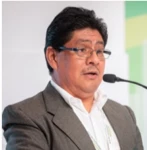 Comunidad Embera en Panamá. Foto: David Pérez Vázquez/Banco Mundial
Comunidad Embera en Panamá. Foto: David Pérez Vázquez/Banco Mundial
Central America’s diverse population includes more than 60 groups of Indigenous Peoples, whose systems of cultural, economic, political, and social organization have developed over centuries. These ethnic groups have been contributing throughout that time to what we now call disaster risk management (DRM) and adaptation to climate change with their own brand of knowledge, science, and traditional practices.
These groups recognize that there is an intimate relationship between the universe, nature, and humanity, and that it is based on harmony and balance. These are essential elements for DRM and building climate resilience. But despite their ancient wisdom and practices, 80% of the 42 million Indigenous People in Central America and the rest of Latin America live in poverty, having been historically excluded from the formal economy.
This has translated into an extreme inequality that hampers their identification as collective subjects of rights and the recognition of their lands and territories. It also impedes their access to natural resources, basic services, the formal economy, and justice, as well as their participation in decision making. This legacy of inequality and exclusion has made these groups more vulnerable to disaster risk and the impacts of climate change.
Central America is the world’s second most vulnerable region to natural hazards. But the region, rich in natural and cultural resources, can improve its climate resilience if the entire population, including its Indigenous Peoples, works together. If the knowledge of indigenous traditions is combined with modern technology, this can create opportunities to build a more resilient Central America.
Indigenous Peoples argue that recognizing their knowledge, rights, and systems is necessary in the processes of emergency response, prevention, and reconstruction. In addition, they want events to be seen from the perspective of their indigenous science and knowledge. They also want their own efforts in institutional and organizational strengthening, rights and safeguards, and voice and participation to be taken into account.
This is a view shared by the UN Climate Change Conference of the Parties, which has recognized that Indigenous Peoples are part of the solution to tackle climate change. Indeed, it has established a platform to strengthen the knowledge and practices of local communities and Indigenous Peoples to address and respond to this threat. The global DRM community should take steps to involve Indigenous Peoples as expert partners in this.
Toward the integration of the Indigenous Peoples’ culture and traditions
1. Governance for DRM, indigenous rights, and safeguards. Guarantee the respect, recognition, and exercise of indigenous rights and safeguards in all DRM actions. This means recognizing and respecting Indigenous Peoples’ institutions and organizations at the local, national, and international levels, and ensuring spaces for their advocacy and participation in making decisions.
2. Risk knowledge. Develop and implement traditional and ancestral science, knowledge, and practice as part of DRM laws, policies, plans, programs, and projects. Provide timely access to climate and hydrological forecasts as well as the predictions of modern science.
3. Risk reduction and prevention. Develop cultural management processes for indigenous territories as a mechanism for resilience and adaptation. This includes actions for analysis, planning, evaluation, monitoring, and communications in indigenous languages on disaster risk management and response, as well as incorporating Indigenous People’s perspective and their traditional knowledge.
4. Emergencies. Carry out evacuations, rescues, and shipments of food and clothing (according to cultural traditions), medicines, and drinking water during emergencies, and take preventive intercultural health care actions with indigenous authorities to install safe, dignified, and adequate shelters in line with their customs and norms.
5. Recovery and reconstruction. Normalize the conditions of Buen Vivir, or living well, of any affected Indigenous Peoples by rebuilding after disasters in a culturally appropriate way. If housing structures are damaged as a result of climate events, they should be rebuilt based on the Indigenous Peoples’ systems and their social, economic, institutional, cultural, natural, and environmental capacity.
This article is part of a series based on the report Towards a More Resilient Central America. Read the series and share your opinions on social media using #CentroaméricaMásResiliente.
Related resources in Spanish:
• Hacia una Centroamérica más resiliente
• Video: El conocimiento de los pueblos indígenas en gestión de recursos naturales ante riesgos climáticos
• Latinoamérica indígena en el siglo XXI




Join the Conversation